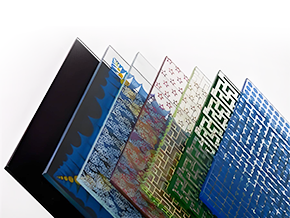
Stained Glass
Categorization:
Stained glass is an art form that has captivated audiences for centuries. Its vibrant colors and intricate designs have adorned cathedrals, churches, and homes alike, transforming ordinary spaces into extraordinary experiences. The history, techniques, and cultural significance of stained glass offer a fascinating glimpse into a world where light, color, and artistry converge.
The origins of stained glass can be traced back to ancient civilizations. The earliest known examples date back to the Roman Empire, where colored glass was used to create decorative windows. However, it was during the Middle Ages that stained glass reached its zenith. The Gothic cathedrals of Europe, with their towering walls and expansive windows, provided the perfect canvas for this art form. These windows were not merely decorative; they served a functional purpose by illustrating biblical stories and conveying moral lessons to a largely illiterate population.
The process of creating stained glass is both intricate and labor-intensive. It begins with the selection of glass, which is often colored by adding metallic oxides during the manufacturing process. Artisans then cut the glass into various shapes and sizes, which are assembled into a design. Each piece is held together by lead came, which is soldered to create a stable structure. The final step involves the application of paint to add details and enhance the overall design. Once complete, the window is installed, allowing light to filter through and create a mesmerizing display of colors.
One of the most remarkable aspects of stained glass is its ability to transform a space. When sunlight passes through these colorful panes, it casts a kaleidoscope of hues onto the surrounding surfaces, creating an ethereal atmosphere. This phenomenon is particularly evident in religious settings, where the interplay of light and color is often seen as a reflection of the divine. Many churches and cathedrals have been designed with specific lighting conditions in mind, ensuring that the stained glass windows are illuminated in a way that enhances their beauty and spiritual significance.
Stained glass is not limited to religious structures. In recent years, it has found its way into contemporary architecture and design. Modern artists have embraced the medium, experimenting with new techniques and materials to create innovative works. Stained glass panels can now be found in homes, offices, and public spaces, serving as both functional elements and striking art pieces. This evolution of stained glass reflects a broader trend in the art world, where traditional techniques are being reimagined for modern contexts.
The cultural significance of stained glass extends beyond its aesthetic appeal. It serves as a historical record, capturing the beliefs, values, and artistic styles of different eras. Each piece tells a story, whether it be a biblical narrative, a historical event, or a personal expression of the artist. Collectively, these works contribute to our understanding of cultural heritage and the evolution of artistic expression.
In addition to its historical and cultural value, stained glass also has a profound emotional impact. The experience of standing before a grand stained glass window can evoke feelings of awe and reverence. The interplay of light and color creates a sense of wonder, inviting contemplation and reflection. Many people find solace in these spaces, where the beauty of the stained glass can provide a moment of respite from the chaos of everyday life.
As we move forward into an increasingly digital age, the future of stained glass remains bright. Artists continue to push the boundaries of the medium, exploring new technologies and techniques while honoring traditional craftsmanship. Workshops and studios dedicated to stained glass are thriving, attracting a new generation of artisans eager to learn and create. Additionally, the rise of environmental consciousness has led to a renewed interest in sustainable practices within the industry, with many artists seeking eco-friendly materials and methods.
In conclusion, stained glass is a timeless art form that bridges the past and the present. Its rich history, intricate craftsmanship, and emotional resonance make it a unique medium that continues to inspire and captivate. Whether found in the soaring arches of a cathedral or the intimate setting of a home, stained glass serves as a testament to the enduring power of art to uplift the human spirit. As we celebrate this remarkable tradition, we also look forward to the innovative expressions of stained glass that will emerge in the years to come, ensuring that this beautiful art form remains a vibrant part of our cultural landscape.
Keyword:
Stained Glass
Submit Message
If you are interested in our products, please leave your email and we will contact you as soon as possible, thank you!





